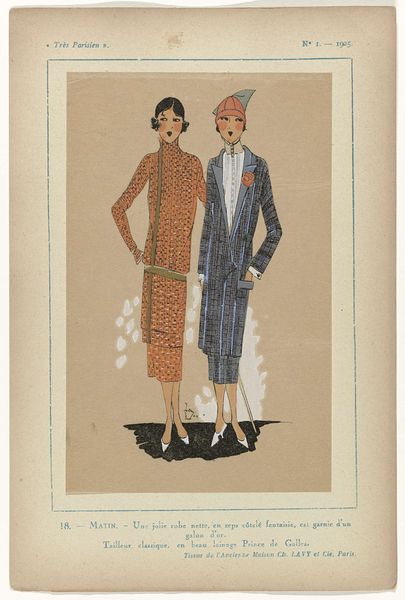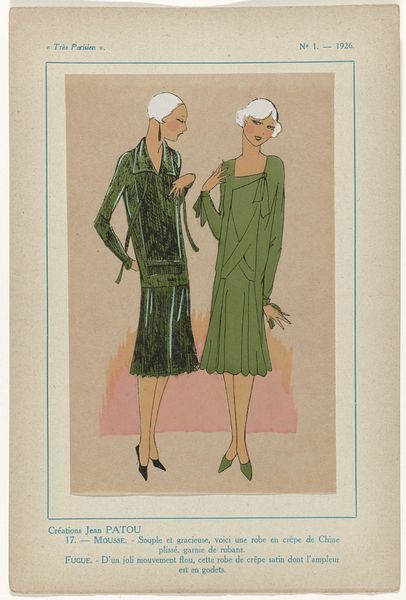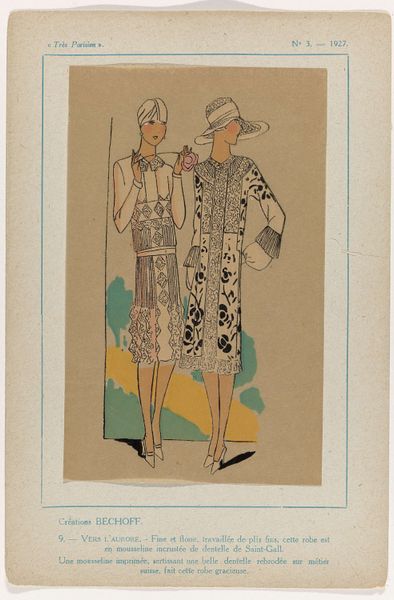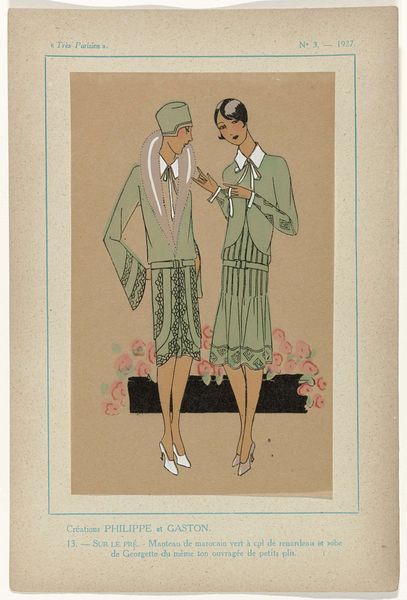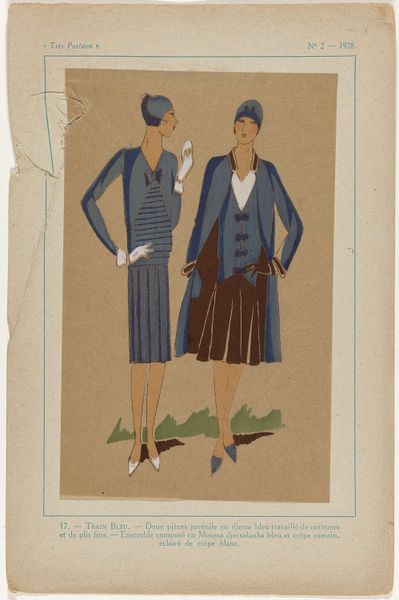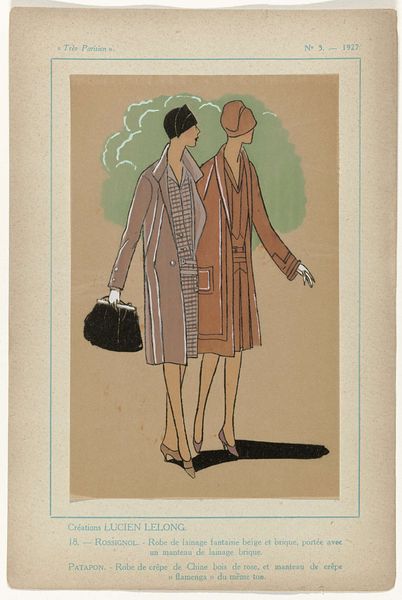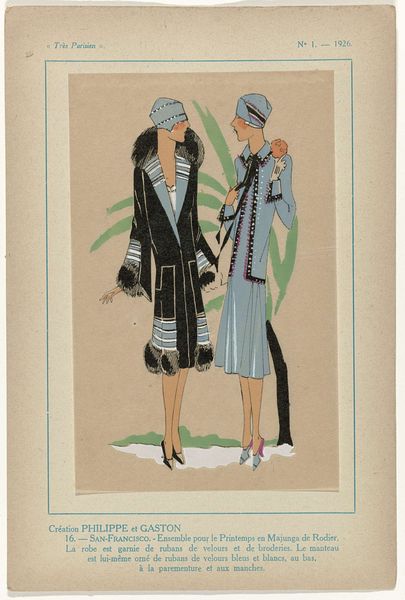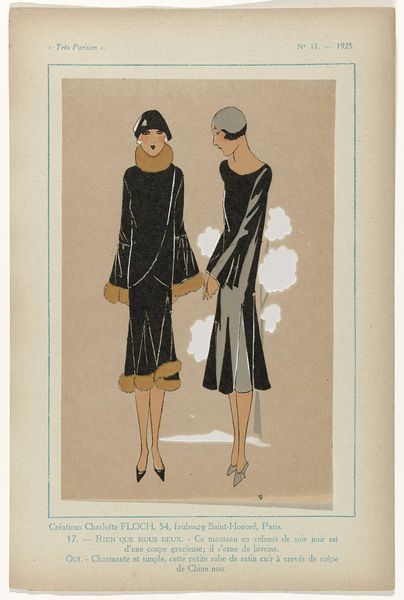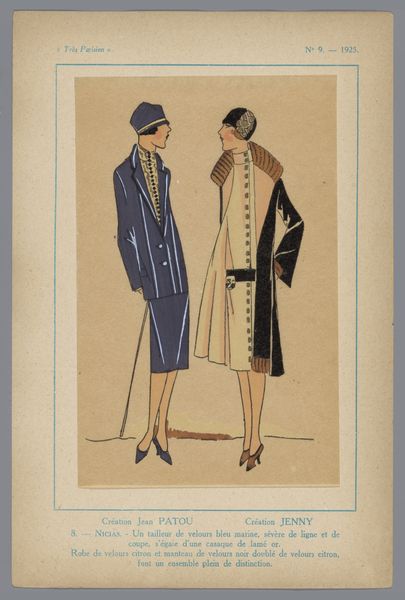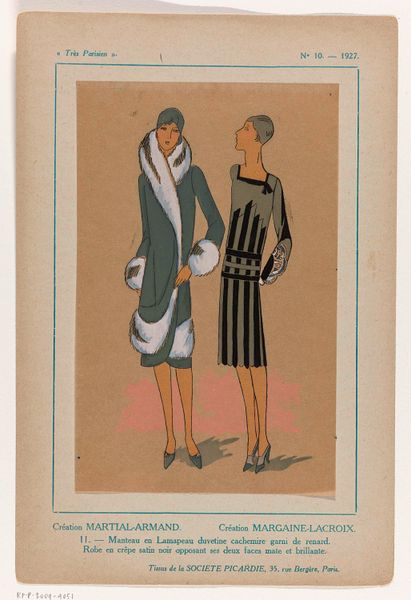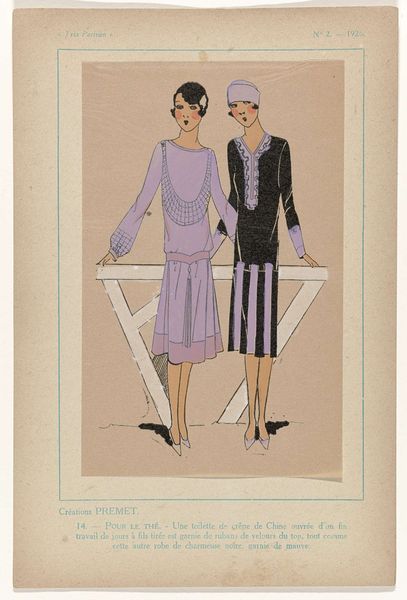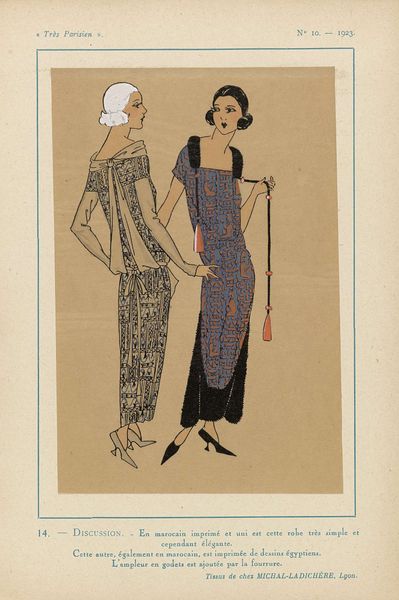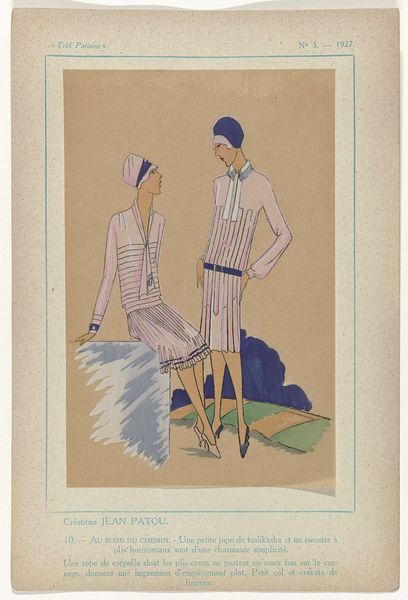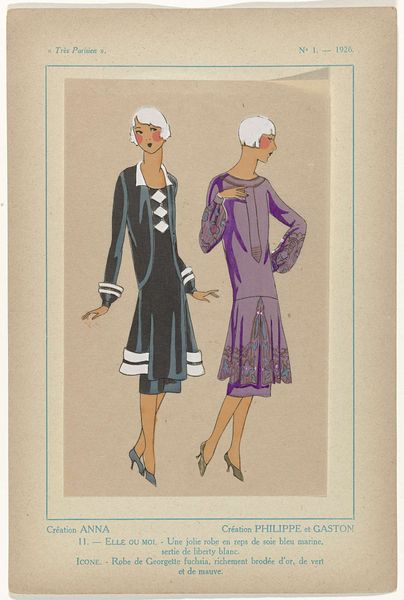
drawing, print, paper, watercolor, ink
#
portrait
#
art-deco
#
drawing
#
blue ink drawing
# print
#
paper
#
watercolor
#
ink
#
watercolour illustration
#
dress
Dimensions: height 195 mm, width 120 mm, mm
Copyright: Rijks Museum: Open Domain
Editor: So, here we have "Très Parisien, 1926, No. 1, Pl. 1: Créations DOUCET - ANTIGONE" by G-P. Joumard, it's an ink and watercolor print on paper. It depicts two women modeling dresses and it just screams "Art Deco" to me. What do you make of it? Curator: It certainly does. These figures embody more than mere fashion; they represent a yearning for modernity, a breaking away from past constraints. Notice how the garments de-emphasize the natural curves, embracing geometric forms? This speaks to a cultural shift, a rejection of Victorian ideals of femininity. Editor: I see what you mean. It's less about showing off the body and more about… the line? Curator: Precisely. Line, color, form—these elements are deliberately simplified. Consider the stylized tree between them. It's a tree, but also a symbol; what could it represent to you? Editor: Hmmm... growth, or maybe the flourishing of this new aesthetic? Curator: It could. Also, notice the print is titled Antigone, alluding to Sophocles’s tragic heroine, and is described as ‘chic,’ this connection creates another meaning. Fashion became less restrictive during this era, and became an arena for female liberation and self expression. It’s like a costume – a role they play for each other. It feels… playful? Editor: Absolutely. I never thought of it that way. There is so much cultural encoding here! I had a hard time believing dress could function like code, or memory, but you've convinced me. Thanks! Curator: Indeed, fashion and image making operate at these complex junctures of personal identity, history and collective desire. Thinking about it enriches our relationship to both fashion and art!
Comments
No comments
Be the first to comment and join the conversation on the ultimate creative platform.
